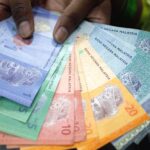Australian dollar climbed to the highest in two weeks against its US peer on Wednesday, following a report to show that Australian Gross Domestic Product exceeded expectations during the second quarter of the year, despite that expectations of a possible scale back of Federal Reserves stimulus program still underpinned demand for the greenback.
AUD/USD rose to a session high at 0.9127 at 6:50 GMT, also the pairs highest point since August 20th, after which consolidation followed at 0.9125, gaining 0.67% for the day. Support was expected to be found at September 3rd low, 0.8972, while resistance was to be seen at August 19th high, 0.9233.
An official report said that Australian economy unexpectedly expanded during the second quarter of the year, which might prove to be a supportive signal for the winner of this weeks elections in the country. The Gross Domestic Product rose by 0.6% during the second quarter of 2013 compared to the first quarter, when it increased by the revised down 0.5%. Preliminary estimates were met. On annual basis, Australian GDP rose by 2.6% in Q2, surpassing the projected 2.5% gain.
Another report by the Australian Industry Group (AIG) said that Australian Performance of Services Index (PSI) decreased to its lowest level following the global financial crisis, falling by 0.4 points to 39.0 in August. The index remained in the contraction zone during every month since January 2012, when it showed a reading of 51.9. The overall result was mainly influenced by the larger drop of the index of employment and the index of deliveries. However, this drop was partially compensated by the higher number of received new orders. Capacity utilization in the sector of services registered the second largest decrease since the beginning of record back in 2007.
A positive signal for the Aussie was submitted also by China, where activity in the sector of services rose to the highest level in five years. HSBC reported that its services PMI advanced to a reading of 52.8 in the month of August, supported by a higher number of new orders. The index, gauging employment, dropped, as service providers projected continuous pressure on profits, despite the moderate increase in prices of services in August, which was the first gain during the past four months. HSBC also added that the effects of the value added tax (VAT) reform in the country, alongside the sound data regarding Chinese manufacturing, might favor industrial development in the coming months. This data is of a significant value for the Australian dollar, as China is Australias largest export partner.
Meanwhile, on Tuesday the ISM manufacturing index in the United States was reported at 55.7 in August, exceeding preliminary estimates of a value of 54.0, while in July the index stood at 55.4. Also, Markit research group said that the final value of the US manufacturing PMI decreased to 53.1 in August from the initially estimated value of 53.9 in the middle of the preceding month. These data points strengthened the view of a possible stimulus pare back by the US central bank at its meeting on September 17-18th.
Investors attention was focused on Fridays report on US non-farm payrolls, which could be the key element to Federal Reserves decision on policy.
Elsewhere, the Aussie was gaining against the euro, as EUR/AUD cross dropped by 0.72% to trade at 1.4432 at 7:53 GMT. AUD/NZD pair was little changed, ticking up 0.04% to trade at 1.1628 at 7:54 GMT.





